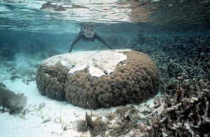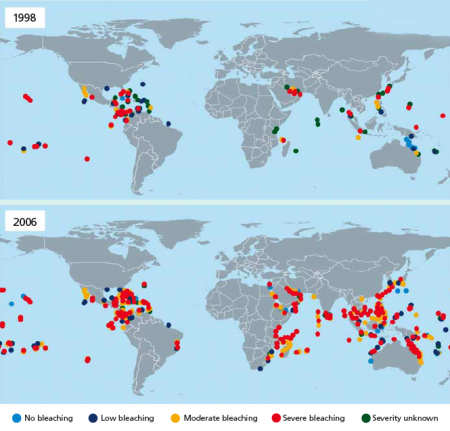What is coral bleaching?
Coral bleaching is one of the major threats to corals.
Coral bleaching is defined as the loss of zooxanthellae (or a reduction in their pigment concentrations per cell) from their hosts.

A starcoral in 1988, where coral bleaching has already started.
Photo: USGS.
|

The same starcoral in 1998, where major coral bleaching is detectable.
Photo: USGS.
|
Corals turn white (or "bleach") with the loss of their zooxanthellae (although occasionally, coral host pigments remain, giving the tissues a slight residual color). Without their zooxanthellae, corals typically die within a few weeks (sooner, if conditions are particularly extreme).
Coral bleaching is the best evidence we have that the reef coral symbiosis is obligatory for the coral hosts.
Nearly all of the world's major coral reef regions (Caribbean/western Atlantic, eastern Pacific, central and western Pacific, Indian Ocean, Arabian Gulf, Red Sea) experienced some degree of coral bleaching and mortality during the 1980's.

